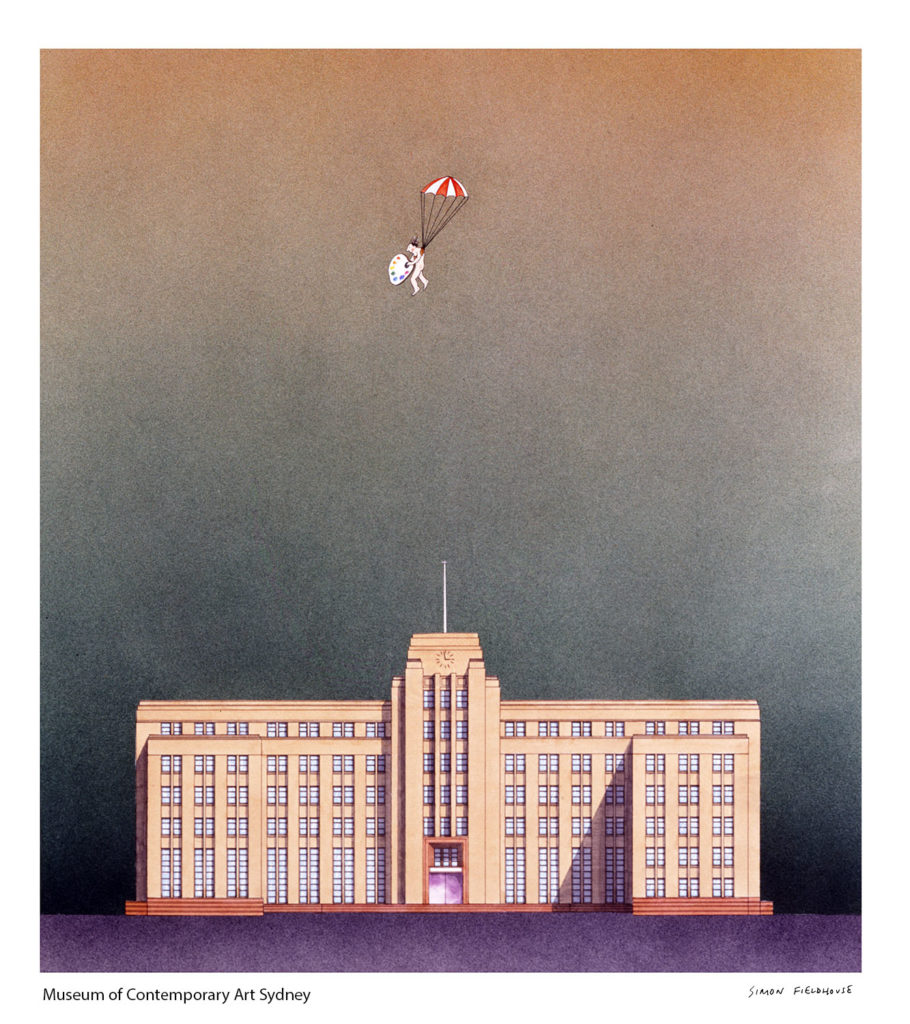
MCA Museum Contemporary Art Australia
Museum of Contemporary Art Australia, Sydney: Exploring Art's Dynamic Landscape
The Museum of Contemporary Art Australia (MCA), situated majestically on the shores of Circular Quay in Sydney, stands as a testament to the evolution of modern artistic expression. Boasting an extensive collection of both local and international contemporary artworks, the MCA serves as a cultural beacon, inviting visitors to immerse themselves in a diverse array of artistic creations and experiences.
Historical Roots and Architectural Marvel:
The roots of the MCA trace back to 1991 when it was established, although its current form took shape after a significant refurbishment in 2012. The architectural redesign led by Sam Marshall transformed the building, enhancing its capacity to accommodate a more expansive and varied collection while providing an immersive experience to the visitors. Its sleek, modern design allows the art within to be showcased against a backdrop that harmonizes tradition with innovation.
A Collection that Speaks Volumes:
The MCA's collection is a vibrant mosaic of contemporary art, embracing various mediums such as paintings, sculptures, installations, and multimedia art forms. It showcases works by both established and emerging artists, thereby offering a comprehensive view of the ever-evolving art landscape.
The museum prides itself on its commitment to supporting Australian artists, ensuring their voices reverberate both locally and globally. Alongside these local talents, the MCA hosts an impressive array of international artworks, fostering a dialogue between different cultures and artistic perspectives. This amalgamation of diverse art forms and cultural backgrounds enriches the visitor's experience, inviting introspection and exploration of varied narratives.
Exhibitions and Programs:
The MCA doesn’t just exhibit art; it breathes life into it through a dynamic array of exhibitions and educational programs. These temporary exhibitions feature thematic showcases or spotlight individual artists, ensuring that each visit to the museum is unique and thought-provoking.
Additionally, the museum's educational programs cater to diverse audiences. From workshops and guided tours for students to talks and events for art enthusiasts, the MCA aims to make art accessible and engaging for everyone. The museum's commitment to community engagement and education elevates its significance beyond being a repository of art, fostering an environment of learning and creativity.
Cultural Impact and Significance:
The MCA plays a pivotal role in shaping Sydney’s cultural landscape. Its strategic location at Circular Quay makes it a vital part of the city's cultural hub, attracting locals and tourists alike. The museum stands as a sanctuary for artistic expression and serves as a platform for critical conversations around contemporary issues, demonstrating the power of art to reflect, challenge, and inspire.
Moreover, the MCA's outreach extends beyond its physical boundaries. Through digital initiatives, online exhibitions, and virtual tours, the museum connects with a global audience, spreading the influence of contemporary art beyond geographical constraints.
Conclusion:
The Museum of Contemporary Art Australia in Sydney stands not only as a custodian of modern art but also as a catalyst for cultural enrichment and inspiration. Its commitment to showcasing a diverse range of artworks, nurturing emerging talents, and engaging with the public through various programs underscores its significance in the ever-evolving art world. As a beacon of creative expression and cultural exchange, the MCA continues to shape the narrative of contemporary art, inviting all to explore and appreciate the boundless realms of artistic innovation.
Adaptive Reuse:
Originally, the building was the Maritime Services Board Building, constructed in the 1950s. When it underwent a transformative renovation in 2012, the architects, led by Sam Marshall, embraced an adaptive reuse approach. This approach retained the building's historical integrity while infusing it with contemporary elements. The fusion of old and new, evident in the architectural design, symbolizes the coexistence of tradition and innovation, a metaphor mirrored in the art displayed within.
Harmonizing Tradition with Modernity:
The refurbishment introduced a striking contrast between the old sandstone façade and the modern, sleek glass extension. The juxtaposition of these architectural styles is not only visually captivating but also symbolically representative of the museum's role—a bridge between the rich artistic heritage of the past and the dynamic, ever-evolving landscape of contemporary art.
The glass extension, with its open, light-filled spaces, provides an ideal canvas for showcasing artworks. The expansive galleries and strategic layout offer visitors an immersive experience, allowing art to interact with space and light, creating a dynamic environment that enhances the appreciation of the exhibited works.
Sustainable Design:
Beyond its aesthetic appeal, the MCA also emphasizes sustainable design elements. The refurbishment incorporated eco-friendly features, such as energy-efficient systems and a rainwater harvesting system. These sustainable initiatives align with the museum's commitment to responsible practices, contributing to the broader conversation about environmental consciousness and the arts.
Seamless Integration of Art and Architecture:
The architectural design of the MCA isn't just a backdrop to the art; it seamlessly integrates with the exhibited works. The building's design, with its clean lines, spacious galleries, and natural light, provides an ideal setting for a diverse range of art forms, enabling visitors to engage with the artworks in an immersive and contemplative manner.
The MCA's architecture acts as a facilitator, guiding visitors through a journey of exploration, each space thoughtfully designed to enhance the experience and appreciation of the art on display.
Cultural Icon and Landmark:
In essence, the architectural transformation of the MCA has not only revitalized a historical building but has also elevated it to the status of a cultural icon. The museum’s architectural significance extends beyond its function as a space for art—it has become a recognizable landmark that contributes to Sydney’s architectural identity and cultural vibrancy.
In conclusion, the architectural metamorphosis of the Museum of Contemporary Art Australia in Sydney is an artful blend of historical preservation and modern innovation. It stands as a testament to the harmonious coalescence of architectural elements that enrich the experience of the art it houses, welcoming visitors into a space where tradition and modernity converge in a celebration of creativity and expression.